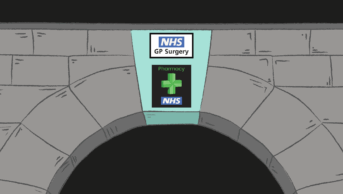
Shutterstock.com
According to the latest annualised reports on Pharmacy First Scotland published by Public Health Scotland (PHS), 36% of people in Scotland used the service in 2024/2025.
The report, published on 21 October 2025, revealed that 1,942,214 people accessed the NHS Pharmacy First Scotland service during the reporting period.
In 2024/2025, the number of people who used the service at least once in a year increased by 56% from 1,242,842 in 2021/2022, which was seen in both males and females, all age groups and levels of deprivation.
Use of the service was higher among people living in more deprived areas, as 410 people per 1,000 population accessed it, while in the least deprived areas, 337 people per 1,000 population used the service, the data showed.
Community pharmacy unscheduled supply (CPUS) services — which enable community pharmacists to provide patients with up to one prescribing cycle of their repeat medicines and appliances, where obtaining a prescription has not been possible — were used by 599,357 people or 11% of the Scottish population.
The number of people using CPUS at least once in a year increased by 20% from 498,555 in 2021/2022 — as with Pharmacy First Scotland, this increase was seen across all demographic groups reported.
Posting on LinkedIn, Matt Barclay, chief executive of Community Pharmacy Scotland, called the report “a testament to community pharmacy teams delivering a successful service to the people of Scotland”.
However, he said that “to enhance this further more resource needs to be found to widen the scope of the service for patients”, which “would support meeting the ambitions of the operational improvement plan from Scottish government, produced in February 25 [2025], which highlighted the value of Pharmacy First”.
He warned that “without this additional resource the success of the service will continue but not fully realise the potential of what it could be for patients”.
Barclay told The Pharmaceutical Journal: “Alongside Scottish government colleagues, we have identified areas that we think could make an impact on patient pathways in primary care. With the right resource (which differs depending on the area) we can make these happen.
“I think it is crucial to the evolution of primary care services and the strategic objectives laid out in the service renewal framework (as well as the operational improvement plan already mentioned) that Pharmacy First is invested in to support capacity and access for patients to NHS services.”
Laura Wilson, director for Scotland at the Royal Pharmaceutical Society, commented: “We are pleased to see the success of pharmacy first in Scotland, and this report provides robust evidence of the valuable contribution which community pharmacy teams are making every day to improve patient care.
“Expansion of pharmacy first is possible. However, the right infrastructure and support systems will need to be established for the service to reach its full potential.
“In particular, the development of a shared integrated electronic patient record, which all pharmacists in the community have read write access to, is of vital importance. This would provide pharmacists with the appropriate and essential information required to make prescribing and other key decisions, enabling even better patient experience and care.”


